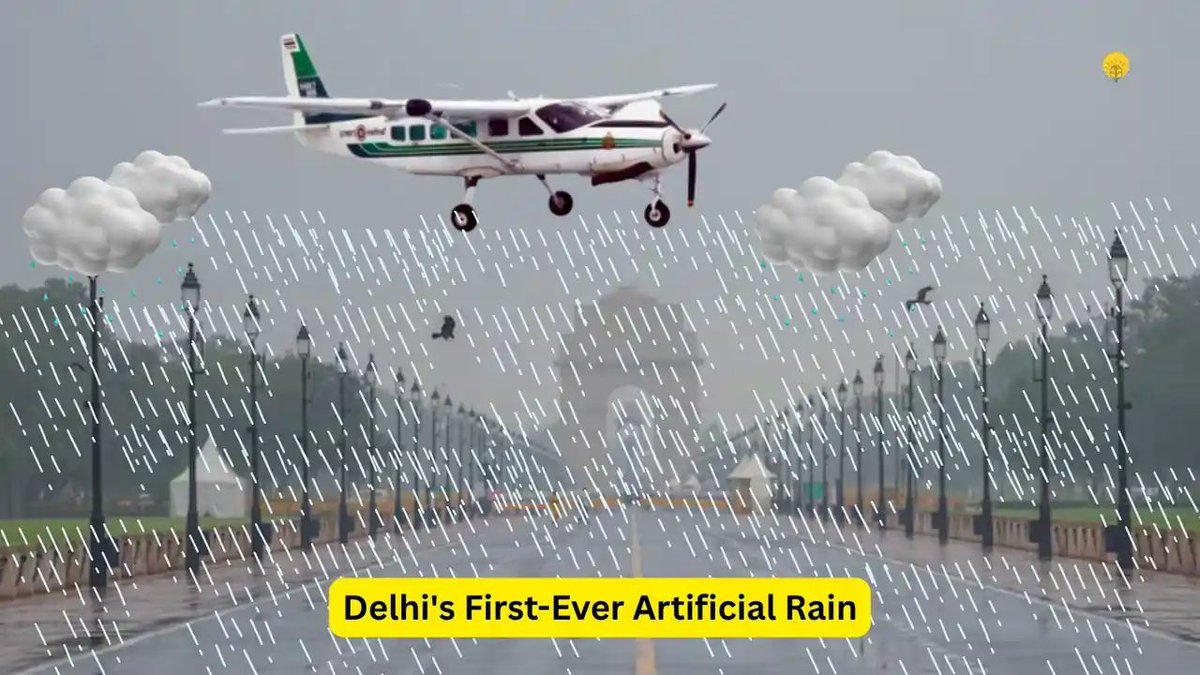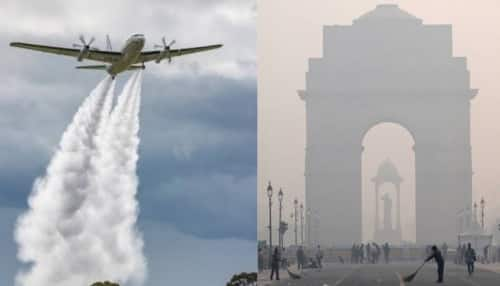In a groundbreaking attempt to bring relief to pollution-choked Delhi, a research aircraft from the Indian Institute of Technology (IIT) Kanpur took off on Monday to conduct India’s first artificial rain experiment over the National Capital Region (NCR). The project — a collaboration between IIT-Kanpur and the Delhi Government — aims to assess whether cloud seeding can effectively cleanse the city’s heavily polluted atmosphere.
Delhi’s Environment Minister Manjinder Singh Sirsa confirmed that the specially equipped Cessna aircraft, carrying cloud-seeding instruments, received weather clearance from the Directorate General of Civil Aviation (DGCA) before taking off from Kanpur. Upon reaching Meerut, the team will finalize the flight path based on real-time atmospheric data.
Morning Delay Due to Low Visibility
The much-anticipated experiment faced initial hurdles early Monday. The aircraft’s morning takeoff was postponed due to low visibility in Kanpur, which made conditions unsafe for operations.
“The flight was scheduled earlier, but visibility remained below the required threshold,” Sirsa said. “For effective cloud seeding, we need dense clouds below 5,000 meters; beyond that altitude, the process doesn’t yield results.”
He further added that once visibility improves to over 5,000 meters, the aircraft will proceed with the mission. The Minister, who inspected Delhi’s air quality at ITO Chhath Ghat earlier in the day, expressed optimism that the capital will soon witness its first-ever artificial rainfall trial.
Scientists Warn of Technical Constraints
Meteorological experts are closely monitoring the operation. Mahesh Palawat, Senior Meteorologist at Skymet Weather, explained that while the current weather system over Delhi is suitable for cloud formation, the cloud height remains too high for seeding.
“Clouds are forming around 10,000 feet — too elevated for effective seeding. If the levels drop to under 5,000 feet by evening, the mission could proceed,” Palawat noted, calling the trial a “race against time and weather.”

Delhi’s New Weapon Against Pollution
The cloud-seeding trial represents one of Delhi’s most ambitious attempts to tackle its annual smog crisis. Every winter, the city’s air quality index (AQI) plunges to “severe” levels, driven by stubble burning, vehicular emissions, and stagnant weather conditions.
Officials hope the experiment will demonstrate that scientific weather modification can provide short-term relief by washing away pollutants suspended in the atmosphere. If successful, it could set a precedent for similar operations in other polluted Indian cities.
What Is Cloud Seeding?
Cloud seeding is a weather modification technique where chemicals like silver iodide, dry ice, or sodium chloride are dispersed into clouds to accelerate condensation, potentially leading to rainfall.
Countries such as China, the UAE, and the United States have used this method for years — to combat drought, increase precipitation, and even reduce air pollution before major events. However, experts caution that its success rate varies widely and depends heavily on existing cloud structures and wind dynamics.
A Silver Lining Amid the Smog
WwwWhile scientists remain cautiously optimistic, they agree that artificial rain should be viewed as a temporary solution rather than a substitute for long-term environmental reforms.
“This is a symbolic step — a sign of hope,” said an IIT-Kanpur researcher. “But it must go hand-in-hand with stricter emission controls, cleaner transport, and sustainable urban planning.”
As Delhi waits under a blanket of haze, all eyes are on the skies — and on whether this scientific experiment can finally turn the clouds into a cure.


